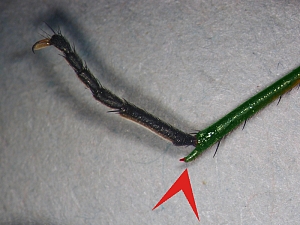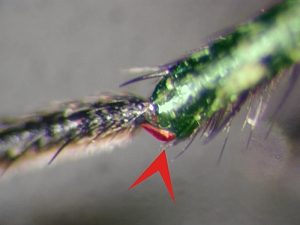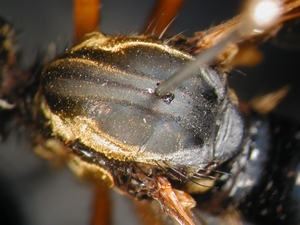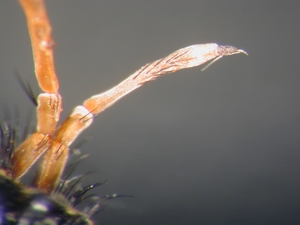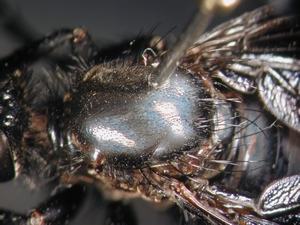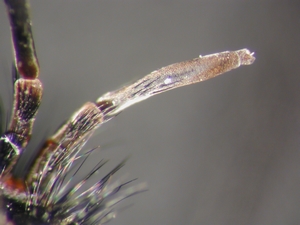g
Start g
- Robber flies of Germany -
[Key] Catalogue Comparisons Notes Terminology
key
- Subfamilies
- Dasypogoninae
Dasypogon
Leptarthrus
Molobratia
contents & layout
& copyright:
Fritz Geller-Grimm
Imprint
Only four species of this subfamily are known from Germany. Undoubtedly, the Dasypogoninae are not a monophyletic taxon and several new tribes were erected recently to form monophyletic subgroups. Dasypogon is the type genus of Dasypogoninae and is represented in Germany with the type species diadema. This species is characterised by a large fore-tibial spur situated on a process and resting on a tubercle with denticles on the basitarsus. The spur is probably an adaptation to the usually hymenopteran prey on which it feeds. In addition, there are well-developed spines on the acanthophorites in the females.
In contrast to this species, Molobratia teutonus has a well-developed tibial spur, but does not posses spines on acanthophorites. LEHR (1999) has erected the new tribe Molobratiini for this genus and placed it in the questionable subfamily Dioctriinae.
The genus Leptarthrus is only known from two boreo-alpine species in Germany. It is placed into the non-valid tribe Isopogonini, which is characterised by the presence of bristle-like fore-tibial spurs, which are sigmoid and not situated on a process (sometimes difficult to distinguish from surrounding bristles).
| 1 a. |
Fore tibial spur large, stout, not movable, and situated on a protuberance [Fig. 1]
. . . . . . . . . . . .
|
| 1 b. |
Fore tibial spur bristle-like, sigmoid, movable, and not situated on a protuberance [Fig. 2]
. . . . . . . . . . . .
|
| 2 a. |
Scutum (dorsum of thorax) with yellow tomentose stripes on lateral margins [Fig. 3]; antennae red [Fig. 4]
. . . . . . . . . . . .
|
| 2 b. |
Scutum (dorsum of thorax) without yellow tomentose stripes [Fig. 5]; antennae black [Fig. 6]
. . . . . . . . . . . .
|
